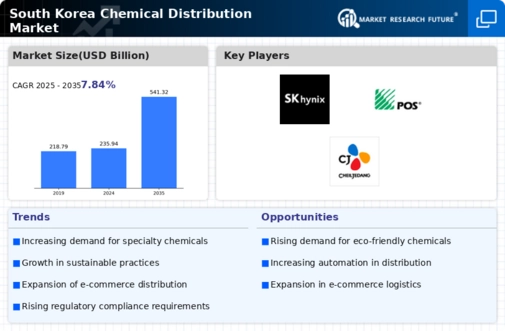The South Korea Chemical Distribution Market is characterized by a dynamic landscape with several players competing for market share and fostering innovation. The market is influenced by various factors, including the demand for specialty chemicals, experience in logistics, and regulatory requirements. This environment encourages companies to adapt and adopt emerging technologies as a strategy for growth. The landscape showcases a mix of established firms and newcomers, all focused on serving diverse sectors, including automotive, electronics, and pharmaceuticals, amidst changing consumer needs and sustainability considerations.
Competitive insights reveal challenges associated with supply chain management and the need for robust distribution networks, which are critical in maintaining market competitiveness. Hanwha Chemical stands out within the South Korean Chemical Distribution Market through its significant market presence and a strong portfolio of products and services. The company combines advanced technology with a commitment to sustainable practices, further solidifying its position in the market. Strengths such as a comprehensive distribution network and a reputation for reliability enable Hanwha Chemical to effectively serve its customer base across various industries, from construction to textiles and electronics.
The company has invested heavily in research and development, which positions it well for future growth. Its strong financial foundation ensures that it can adapt to market shifts and consumer demands promptly, leveraging technological advancements to enhance operational efficiency.Eastman Chemical also plays a vital role in the South Korean Chemical Distribution Market, known for its diverse range of high-performance materials. The company offers key products that serve various sectors, including automotive, packaging, and personal care, with a focus on innovation and application development.
Eastman's strengths lie in its extensive distribution capabilities and a commitment to sustainability, which align with the current trends in eco-friendly product development. The company has had strategic mergers and acquisitions to broaden its footprint and product offerings, demonstrating its intent to capture a larger market share in South Korea. Additionally, Eastman boasts a strong customer-oriented approach, allowing it to tailor solutions that meet local market needs effectively. The company's presence in South Korea is supported by its dedication to technological improvement and customer service excellence, vital in today’s competitive landscape.













